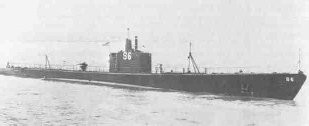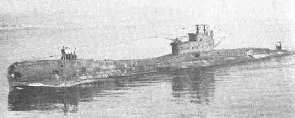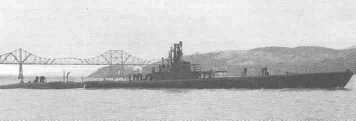
Shop Amazon - Create an Amazon Baby Registry









The United States Navy's (USN) submarine force assigned to the Defence of the Netherlands East Indies (NEI) against Japanese Invasion were part of the USN's Asiatic Fleet based in the Philippines. This submarine force was made up of 28 submarines of which 23 were 'Fleet' subs and 5 were old S-Boats. Soon after the bombing of the USN fleet at Pearl Harbor, Hawaii on December 7th, 1941, Japanese bombers from Formosa began bombing the Philippines. On December 10th, Japanese bombers struck the Cavite Naval Base in Manila Bay. The submarine tender Otus (AS.20) was straddled by several near misses during the attack but escaped unharmed. However, much of the Cavite Naval Base was a shambles. In addition to suffering over 500 dead in the attack, the submarine repair facilities, torpedo overhaul shop, and over 200 torpedoes were destroyed. These losses were a severe blow to the USN submarines based in the Philippines. Two submarines were also at Cavite undergoing overhaul. The USN submarine Sealion (SS.195) was hit by two bombs and ended up half sunk by the stern. Inspection revealed that the sub was unrepairable and she was stripped of all usable equipment and sunk by three depth charges. Bomb fragments of the hits on the Sealion damaged the other USN submarine Seadragon (SS.194). The Seadragon also suffered damage from a fire on the nearby minesweeper Bittern (AM.36). The Seadragon eventually pulled clear of this danger and put alongside the submarine tender Canopus (AS.9) for repairs. After temporary repairs the submarine was sent to Surabaya, Java for more extensive repairs. This set of circumstances did not bode well for the USN submarines based in the Philippines.

It had been expected that the 'Fleet' boats and old S-Boats would be able to take a heavy toll of the Japanese Invasion Forces when they attacked the Philippines. Unfortunately, this was not to be the case. The USN's Asiatic Fleet submarine force was plagued by a combination of unreliable torpedoes, poor tactics, foul weather, and some over cautious submarine commanders. The torpedo problems were found in the USN's Mark XIV torpedo with its secret Mark VI magnetic exploder. The theory was that a Mark XIV torpedo was supposed to run underneath a ship's keel where the Mark VI magnetic exploder would cause the torpedo to explode under the ship, breaking its back. If it worked correctly this type of explosion was much more effective at sinking a ship than putting a hole in its side. It rarely worked correctly and was eventually deactivated by many submarine commanders who relied upon the standard contact exploder. Another problem suffered by the Mark XIV torpedo was its tendency to run too deep. It would be later in the war before these problems were rectified and that all USN submarines could be considered to have reliable torpedoes. Poor tactics were in part caused by the lack of reliable air reconnaissance by General MacArthur's rapidly dwindling air force. Without reliable information it was difficult to get the submarines in position until the landings had already taken place. Poor weather also affected the USN's submarines performance by battering the boats and limiting their visibility. A few submarine commanders proved themselves to be overcautious or unfit for combat after making a war patrol. These commanders were eventually replaced.

In spite of all these difficulties, the USN submarines did make several attacks on Japanese shipping. As previously mentioned, torpedo problems kept many of these attacks from being successful. The torpedoes either ran too deep, magnetic exploder failed to explode, or they exploded prematurely. The successful attacks were rare, the submarine USN S-38 (Lt. Cdr. Moon Chapple) sank the Hayo Maru (5445 tons) in Lingayen Gulf on December 22, 1941, the USN submarine Swordfish (SS.193) (Cdr. Chet Smith) sank two freighters (11,391 tons) one of which is identified as the Atsutasan Maru, off the south coast of Hainan between December 14th-16th, and the USN submarine Seal (SS.183) (Lt. Cdr. Ken Hurd) which sank the freighter Hayataka Maru (856 tons) off Vigan on December 23rd. With the failure to stop the Japanese landings on Lingayen Gulf and the complete lack of air cover it was decided by Vice-Admiral Thomas Hart, the Asiatic Fleet Commander, to command his naval forces from the Dutch Naval Base at Surabaya, Java. He left via USN submarine Shark on the morning of December 26th. Knowing it was only a matter of time before the Japanese land assault would attack Manila, and with little supplies left to sustain them there, the USN Asiatic Fleet submarines left Manila Bay for Surabaya, Java on December 31st, 1941.
Vice-Admiral Hart's strategy for stopping the Japanese in Southeast Asia was to use his meager surface forces and more numerous submarines to defend the Malay Barrier. He knew the Japanese would be using Davao as a staging base for their Netherlands East Indies operations and several USN submarines were ordered to attack the south bound convoy's. Lamentably, many of the USN subs reached their patrol stations late, by which time most of the invasion forces had already passed them. Only two Japanese ships were sunk in this attempt to attack the invasion forces while in transit to their landing points. On January 10th, 1942 the USN submarine Pickerel (SS.177) (Lt. Cdr. Bart Bacon) torpedoed and sank a small freighter (ex-gunboat Kanko Maru) of 2929 tons off Davao. On the same day the USN submarine Stingray (SS.186) (Lt. Cdr. Raymond Moore) sank the Harbin Maru (5167 tons) off Hainan.
Some warships were sighted and the submarine USN Sailfish (SS.192 ex-Squalus) fired four torpedoes at a Nachi class cruiser off Davao, but the torpedoes missed.
With the failure to inflict much damage on the Japanese invasion forces leaving the Philippines, the USN sub forces were redeployed to attack the Japanese at their Netherlands East Indies landing sites. In the process of this redeployment grounding on Taka Bakang Reef in the Strait of Makassar lost the USN submarine S-36. The crew was rescued by the Dutch ship S. S. Siberoet. The USN submarine Swordfish (SS.193) (Lt. Cdr. Chet Smith) found the Eastern Invasion Force off Kendari on January 24th. The submarine penetrated the harbour to find the Japanese landings already taking place. In spite of the proximity of the Imperial Japanese Navy (IJN) escort forces in the harbour, the Swordfish sank the transport ship Myoken Maru (4124 tons) and damaged another of 8035 tons. The USN submarine Salmon (SS.180) (Lt. McKinney) torpedoes the IJN Destroyer Suzukaze on February 4th off Kendari, but the destroyer is salvaged. These losses do not hinder the Japanese invasion plans.

The Japanese Western Invasion Force made its landings at Tarakan Island. The USN submarines Spearfish, S-37, and S-41 are in the area but do not make contact. The next goal for the Western Invasion Force was the oil port of Balikpapan. The USN deployed seven subs to intercept it. The USN submarine Pike (SS.173) spotted the incoming invasion force on January 22nd. The USN submarine Sturgeon (SS.187) (Lt.Cdr. Bull Wright) made several attacks and some hits are recorded on two Japanese transports of 15,863 tons, which have to be beached at Balikpapan. The USN submarine Porpoise (SS.172) sighted a cruiser and made an attack on another contact without results. The USN submarine Stingray (SS.186) made several attempts to attack the Japanese transports, but was driven off each time by the IJN escorts.
The USN submarine Seadragon (SS.194) (Lt. Cdr. Pete Ferrall) was stationed in the Camranh Bay area to intercept Japanese invasion forces coming out of that area. Several attacks were made between January 23rd and February 11th and three ships of 19,689 tons are damaged. One of these the Tamagawa Maru (6441 tons) eventually sank.
While these actions were taking place the USN submarine Shark (SS.174) (Lt. Cdr. Louis Shane) stationed in the Molucca passage was depth charged and sunk either by the Japanese destroyer Amatsukaze (Cdr. Tameichi Hara) around February 3rd or the IJN destroyer Yamakaze (Lt.Cdr. Shuichion Hamanaka) on February 11th. The USN submarine S-37 (Lt. Dempsey) torpedoes and sinks the IJN destroyer Natsushio off Makassar on February 8th.
During the first week of February, Vice-Admiral Thomas Hart tired from two months of continuous command, which now included all ABDA forces, asked to be relieved. The request was granted and Admiral Hart returned to the USA to be replaced by Dutch Vice Admiral Conrad E. L. Helfrich. By early February the USN Asiatic Fleet still had 26 submarines available for the Defence of the Netherlands East Indies. However, after the USN submarine S-37 (Lt. Dempsey) sank the Japanese destroyer Natsushio on February 8th no more Japanese ships are sunk by USN submarines during the month of February. Several attacks are made by the USN subs but no more sinkings are recorded. On February 12th, the USN submarine Spearfish (SS.190) attacked two IJN cruisers southwest of Celebes. Four torpedoes were launched but no hits were recorded. The night of February 14th, the USN submarine Skipjack (SS.184) fired two torpedoes, which missed a tanker in the Molucca passage. On February 15th, the USN submarine Perch (SS.176) launched two torpedoes at a freighter and missed. The USN submarine Seawolf (SS.197) and Royal Navy's (RN) HMS submarine Truant attacked a Japanese landing force at Bali, but fail to achieve anything due to torpedo defects and misses.

Finally on February 25th, the Japanese Invasion Forces left their bases to begin the invasion of Java. The invasion force was embarked on 97 transports escorted by several cruisers and many destroyers. Also providing cover is the 1st Carrier Air Fleet (Vice-Admiral Nagumo) consisting of the carriers Akagi, Kaga, Hiryu, and Soryu, the battleships Hiei and Kirishima, the heavy cruisers Tone and Chikuma, with their attendant destroyer screen. Even in this target rich environment the USN submarines were able to do little to stem the Japanese invasion forces. On the night of February 25th, the USN submarine Salmon (SS.180) spotted two IJN cruisers and fired four torpedoes. None of these torpedoes hit. The same day the Seawolf (SS.197) attacked a small convoy and shot six torpedoes. These torpedoes either missed or exploded prematurely, not doing any damage to the convoy. By February 28th, the Japanese have landed their troops on Java. While the invasion was taking place, the USN submarine tender Holland (AS.3) was ordered to leave Java and proceed to Australia. The Holland was escorted by five submarines during the voyage. This left about a dozen USN submarines on war patrol in the waters around Java.
Finally on March 1st the USN submarine force began to achieve some successes against the Japanese Invasion Forces. These victories, however, would not effect the Japanese invasion of Java, which surrenders on March 9th. One of the submarines to sink a Japanese ship on March 1st is the USN submarine S-39 (Lt. Cdr. Jim Coe). The S-39 along with the Dutch submarine K-XV (Lt. Cdr. von Boetzelaer) put at least three torpedoes into a tanker (6500 tons) which sank in the Sunda Strait. While on patrol in the Lombok Strait, the USN submarine Sailfish (SS.192) sank an aircraft ferry of 6440 tons with two torpedoes. The Seawolf (SS.197) patrolled south of Java and damaged one ship of 4446 tons. Several other attacks are made by USN submarines with no results. One USN submarine Perch (SS-176) is lost when attacked by the IJN destroyers Amatsukaze and Hatsukaze while trying to get at the Eastern Invasion Force. The submarine is badly damaged by a depth charge attack and scuttled after further attacks do more damage to the boat. All hands (59 men) survive the boat's loss and are taken prisoner by an IJN destroyer who picked up the survivors.
The only other successes by Asiatic Fleet Submarines in the month of March are when the USN submarine Sturgeon (SS.187) (Lt. Cdr. Wright) sank two ships, one of which was identified as the Choko Maru, of 1592 tons and damages another of 5100 tons off Makassar in the period from March 28th to April 1st. Also during this period the HMS submarine Truant (Lt. Cdr. Haggard) sank two ships of 11,719 tons off Penang.

On the afternoon of March 31st, the USN submarine Seawolf (SS.197) (Lt. Cdr. Warder) damaged the IJN light cruiser Naka with a torpedo off Christmas Island.
In reviewing the effectiveness of the USN
submarine force helping defend the Netherlands East Indies, the
potential was there to inflict some severe damage to the Japanese
Invasion Forces. Instead the Japanese lost only a few ships to the USN
submarines and their net effect did not stop or delay any of the
invasion plans. The reasons for this failure almost mirror the lack of
success the USN Asiatic Fleet subs had in defending the Philippines
with a few additions. First, some of the submarines had been taken off
patrol duty and been assigned to special supply missions back to Bataan
and Corregidor. The submarines were only able to provide a mere trickle
of the supplies actually needed. These missions probably did help the
morale of the defenders, but more importantly they did salvage some
badly needed submarine parts and allow the recovery of some important
personnel from Corregidor. However, the effect was that submarines,
which could have been used to defend the Netherlands East Indies, were
diverted to these supply missions. Another reason the USN Asiatic subs
did so poorly was due to crew fatigue. There was little time for the
crews to relax and recover from the previous mission. The need was so
great that the submarines were almost constantly on patrol. This
constant patrolling also wore out equipment on the submarines.
Equipment breakdowns and problems caused the boats to miss
opportunities and the noisy, poorly maintained equipment allowed the
Imperial Japanese Navy escort forces to detect the subs easier. The
biggest failure was still the problem with the unreliable torpedoes.
Torpedoes not exploding often thwarted many attacks, which should have
been successful. Until the torpedo problem was fixed the effectiveness
of the entire USN submarine force was diminished.
HMS submarine Trusty began with 1st War
Patrol on February 1st, 1942. Her assigned area was the Gulf of Siam.
She damaged a 200t Trawler on the 8th. On April 1st, HMS Truant scored twice on Yae Maru and Shunsei Maru (11,719 tons total) on her 2d patrol. On June 4th Trusty's 3rd patrol scored on
Toyohashi Maru (7,031 t), while HMS Truant (4th Patrol) scored on Tamon Maru #1 (3,019 t) on July 3d. On November 18th HMS Trusty on her 7th patrol damaged Columbia Maru (5,617 t). All RN subs were pulled out until March of 1944.
Note The first Japanese vessel in World War II (freighter Atsutasan Maru) was sunk by USN submarine Swordfish on 15 December 1941.
The last Japanese vessel in World War II (frigate No.47) was sunk by USN submarine Torsk on 15 August 1945, only few hours before the war ended.
